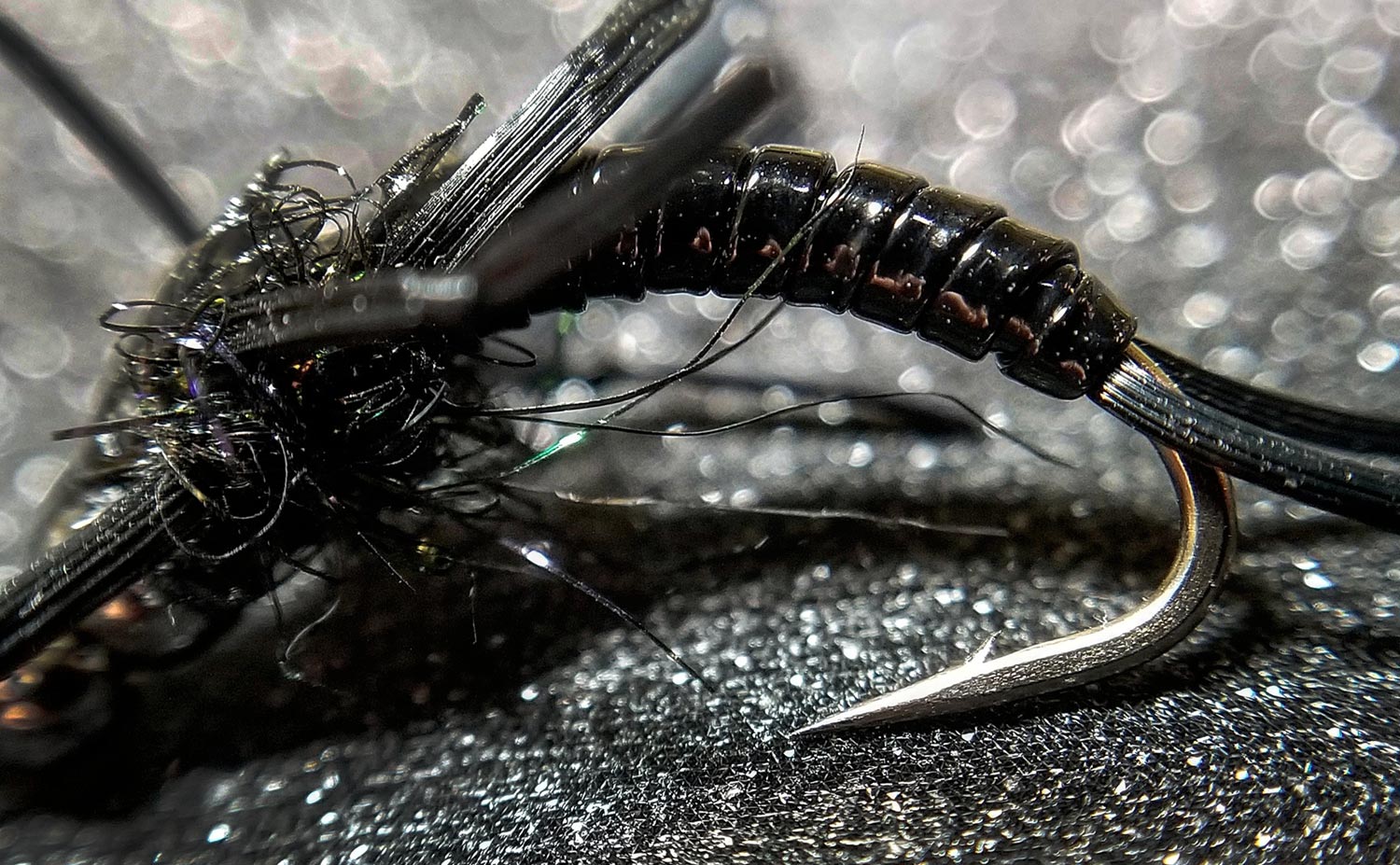By Bob Reece
While fly pattern aesthetics can be pleasing to the eye, solid foundations are equally important.
In the process of fly tying, hooks provide that footing. The desired imitation and application should both be taken into account when selecting hooks for any nymph pattern.
When tying a pattern that has been created by a professional tier, follow the hook choice shown in the original recipe. That tier researched, tested and chose that hook because it accurately allowed for the imitation that they intended. By supplementing a different hook you may alter the posture or profile of the pattern. This can subsequently alter its effectiveness. If you’re in the process of creating your own pattern you should take into consideration the behavior that you are imitating. For example, a swimming scud takes on a straightened posture as it moves through the water. Conversely, a dead scud drifting in the current displays a hunched position. Due to this fact, a straight shanked hook more accurately imitates the swimmer while a curved shank properly mimics the deceased drifter.
In addition to behavior, insect proportions should be analyzed when choosing hook models. For my time spent on Wyoming tail waters I tie midge patterns on size 18 to 24 1x long nymph hooks. In a drastic contrast, I tie large chironomid patterns in sizes 12 to 16 on 2x long nymph hooks for the lakes that I guide on. This difference is not due to a personal preference. It is strictly based on knowing the proportions of the food resource that I am imitating.
Application of the nymph pattern you’re constructing should also impact the model of hook that you choose. While using the strongest applicable hook is ideal, different presentation methods do lend some flexibility to this guideline. Nymphs that are fished in a suspended method with lighter rods can be tied on standard weight hooks. This is due to the cushion added to the system by the flex in those rod weights. Conversely patterns that are stripped through the water using heavier rods need to be tied on extra heavy hooks. The force exerted on the hook with this application method will straighten out lighter hooks. This is especially true when connecting with larger fish.
Imitation is significant but application is equally important. They should both be taken in account when selecting the hook model used to create your nymph patterns. Taking these factors into consideration will help to ensure optimal on-the-water outcomes.
To see more of Bob Reece’s Fly Tying videos, click on the link below:
http://www.thinairangler.com/tying-videos
To experience the fly fishing solitude of Horse Creek Ranch, click on the link below:
http://www.thinairangler.com/horse-creek-ranch-fly-fishing
To step up your tying and fly fishing game, connect with Bob Reece are your Fly Coach through the link below:
http://www.thinairangler.com/fly-coach
Bob Reece Gink & Gasoline www.ginkandgasoline.com hookups@ginkandgasoline.com Sign Up For Our Weekly Newsletter!
Sign Up For Our Weekly Newsletter!


Bob,
That’s a “Nasty” looking fly accompanying this article.
What’s it called?
Mike Postol
Mike,
That is my Reeces Rolling Stone. You can see full pictures of it and my tying video at http://www.ThinAirAngler.com Click on the tying videos tab. I also have a video for the micro version of it, my Stepchild Stone. The video for that is there as well. Let me know if you have any questions. Have a great day.
Bob Reece
Great article on hooks. I primarily use the type of hook with the recipe. I’ve however noticed that bugs vary from region to region so sometimes I obviously vary that hook. It would be great if someone came up with a hook bible. I realize that new hooks are being introduced and sometimes old ones forgotten but a general hook reference would be a great resource. Thanks for the article!
Happy to share J. Thank you for checking it out.
A lot of high quality, barb-less nymph hooks available now thanks to the demands of tournament fishing. Easy in – easy out, back fishing sooner, less damage to the trout and less damage to the fly! A win-win-win-win with barb-less hooks regardless of style.